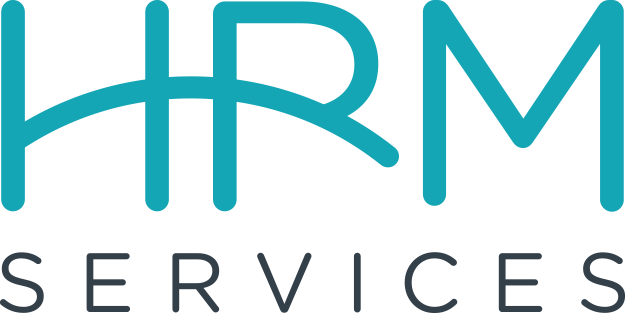
Welcome to the June edition of HR hot topics! I’m your host, Jodi Schafer. We aim to make these posts as informative as we can, so keep a notebook handy and let’s get started!
What are we talking about today? MiOSHA’s new workplace rules. To some degree, these new rules offer more flexibility and freedom of choice to employers. At the same time, many find themselves feeling more uncertain than they did before.
MiOSHA has recently come out with revisions to their COVID-19 emergency rules. These changes took effect on May 24th and will be in place through October 14th. This timeline is different than the Michigan Department of Health and Human Services Public Health Order, which is set to expire on July 1st.
So, we now have two separate orders with different timelines in place, leaving many of us feeling confused on what our next step is.
The new MiOSHA guidelines have essentially divided all of the previous rules into eight new rules. Again, these new rules give much more flexibility to employers, but that doesn’t mean everyone is clear on what to do.
Let’s highlight some of the key changes.
For starters, you still need a COVID-19 preparedness and response plan, but what the plan must include has changed. The Small Business Association of Michigan offers a free template of what this preparedness and response plan should look like.
Another key change is allowing in-person work as of May 24th – which brought on many questions related to masks. The CDC recently came out and said that if you’re fully vaccinated, you no longer have to wear masks. This caught many people by surprise, especially in a state like Michigan where we’ve had heavy regulations in place. Now, businesses are trying to figure out how to align their rules with this new CDC guidance.
MiOSHA has also recently come out with their revised rules around masks, stating that if you’re fully vaccinated as an employee, you don’t have to wear a mask in the workplace, regardless of how close you are to someone else.
With these new regulations, people are now somewhat immune to the mask and the social distancing requirements, unless a business indicates otherwise. Private employers still get to set the rules around what happens in their workplace, both for employees and patrons, so long as they communicate those rules in advance. Employers could comply with the revised MiOSHA rules and say fully vaccinated folks don’t have to wear a mask – be it patients, customers, or employees.
It’s important to note here that natural immunity does not count as fully vaccinated. If you’ve had COVID-19 and have recovered, but haven’t received the vaccine, you don’t fall under this category. You must have received the vaccine in order to not have to wear a mask again, if your employer allows it.
For some of you, this creates division within your workplace. Businesses are going one of two routes; either they’re requiring everybody to continue wearing masks, regardless of vaccination status, or they’re not requiring masks unless you’re within six feet of one another. It’s important to note here that you can always require more than what the law does.
We’ve had some employers try to incentivize vaccination by giving a credit or reward to those who’ve received it. In this case, individuals will be asked to show their vaccination card if they’ve been fully vaccinated. And if you can prove you’re vaccinated, you don’t have to wear a mask. If you’re not fully vaccinated, you still have to wear a mask in all settings.
This is where a challenge presents itself; whichever way you decide to go, you should be involving your staff in the decision-making. There needs to be an understanding of your staff’s vaccination status as well as what their fears and concerns are. Employees always have the option to wear a mask if they want to, but it’s important to consider all perspectives when making these decisions.
When it comes to healthcare settings, employees have to wear masks around patients, even if they’re fully vaccinated. The healthcare industry is in their own category when it comes to mask requirements.
Another change I’d like to note is that physical barriers are no longer required in the workplace. If you currently have them and prefer to keep them, you absolutely can, but they aren’t required.
COVID-19 workplace safety coordinators are still required, but they don’t have to be on-site all the time anymore.
If you’re in a healthcare setting, you can re-open your waiting rooms as long as you can keep patients six feet apart. In addition, you can ask your patients for proof of vaccination. It’s up to you if you want to allow them to unmask.
Health screening is still required for all employees and contractors in healthcare settings, regardless of vaccination status. And you need to retain those health screening forms for six months. But you no longer have to take temperatures.
In the last 15 months, MiOSHA has received 15,000 workplace complaints from employees – that’s a huge number. When making workplace decisions, be sure to involve your staff. Be transparent about MiOSHA’s rules and ask for their feedback. If they don’t like what you’ve decided to do, they can easily submit a complaint. What happens then? MiOSHA pays a visit.
In the event MiOSHA comes to your workplace, the first thing they’re going to ask you for is your COVID preparedness and response plan. Make sure you have one and that it’s updated. I’d encourage you to reach out to colleagues in your industry and find out what they’re doing in terms of masks. Tolerance and comfort level around this will change as the weeks go by, but it’s still very challenging at the present time.
When it comes to making decisions for your workplace, there’s no right answer. Choose whatever makes sense for your business all while considering risk, exposure, and perhaps, vaccination status.
If you have any questions, don’t hesitate to contact the HR professionals at HRM Services! You can reach me directly at JodiSchafer@WorkWithHRM.com.

